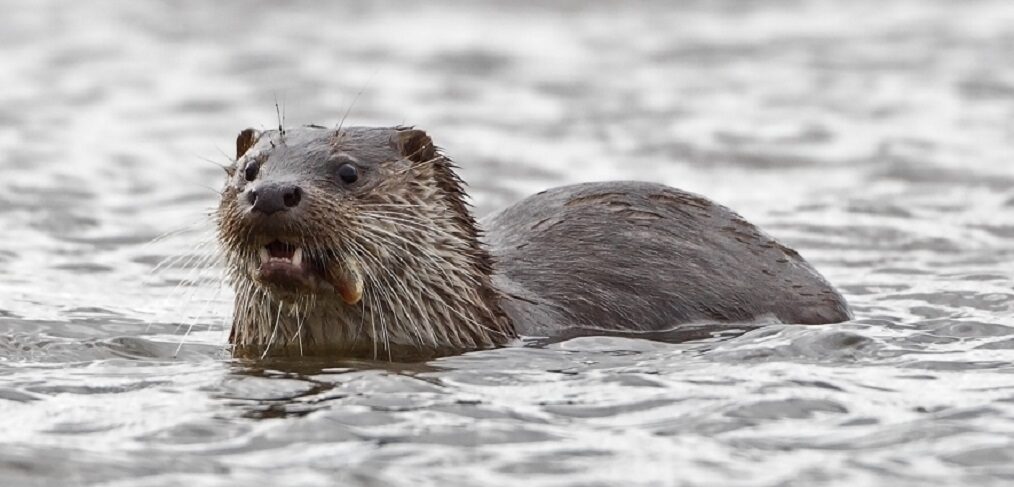
species of the week # 24 – the eurasian otter
The eurasian otter, like the mink, belongs to the marten family. It belongs to the largest martens in Europe: adult animals reach a head-torso length of up to 90 cm. The very dense, short-haired fur is brown with individually different grey to white spots. The streamlined body with the short legs is perfectly adapted to the aquatic life. Striking are the paws, whose five long, clawed toes are connected by webbed feet. When diving the otter can close ears and nose.
| Distribution status | Threatened with extinction |
| Remaining deposits | Brandenburg, Mecklenburg-Western Pomerania, Saxony, Bavarian Forest, North Hesse, Baden-Württemberg Successful resettlement in Lower Saxony, Bremen and Schleswig-Holstein |
| Last sighting in Rhineland-Palatinate | 2006 on the Our near Sevening, Bleialf, Dasburg |
| Living space | Waters with dense riparian vegetation |
| Endangerment | water bodies far from nature, poor water quality, road traffic |
Otters are mainly active at dusk and at night. They prefer to build their sleeping cave close to the shore so that they can be in the water quickly in case of danger. They are excellent swimmers, staying under water for up to 8 minutes, during which time they can dive distances of up to 300 m.
The otter inhabits all habitats influenced by water. Man-made habitats are accepted as well as streams, rivers and ponds. Prerequisites are clean water, good food supply and structural diversity of the water bodies and their banks. Necessary structures are, for example, shallow water zones, scours, stones protruding above the water, sandbanks, reed and reedbed zones and bank woods. The size of the required habitat varies with its quality and depending on the season. A single otter, however, always requires large territories of several kilometres of water stretch, male animals definitely 15 to 20 km. The territories of the females are smaller, often there are several in one male territory.
The otter population in Rhineland-Palatinate became completely extinct towards the end of the 1950s. Since then, only occasional individuals from Luxembourg have been sighted along the Our.
Today, habitat changes, water pollution and unregulated recreational sports prevent the permanent settlement of otters. 90 percent of the immigrated animals die due to road traffic.
Politically necessary:
– Improvement of the water structure and quality
– Biotope networking
– Crossing aids and game bridges
To another species of the week here
Picture: By Juan Lacruz – Own work, CC BY-SA 3.0, https://commons.wikimedia.org/w/index.php?curid=22228572
